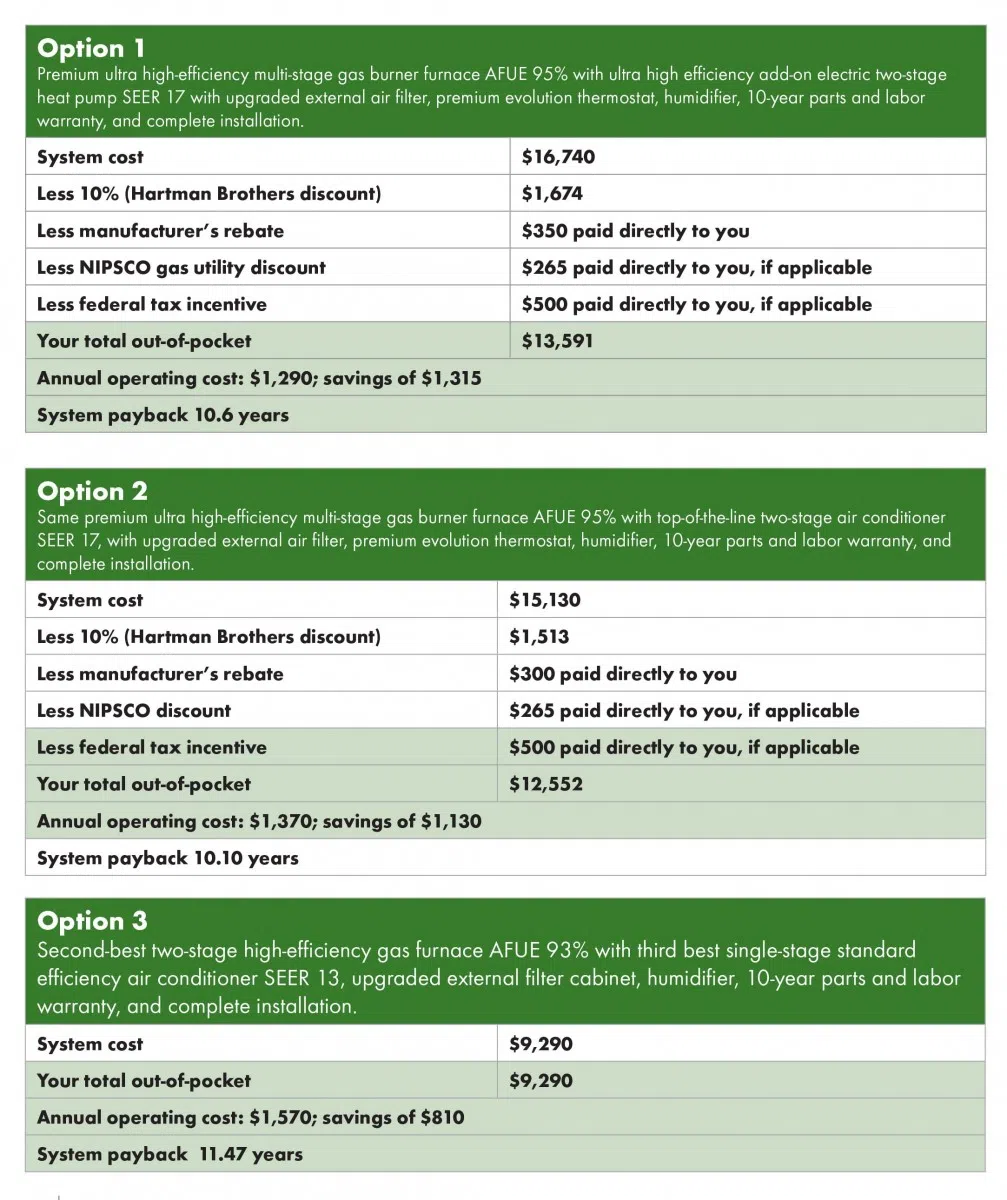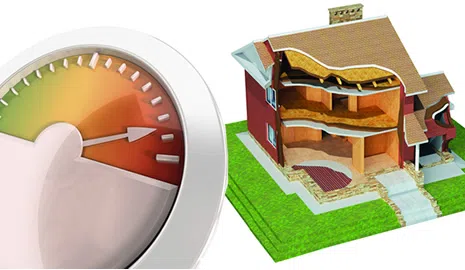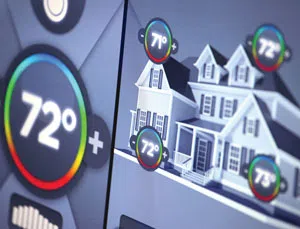How Hartman Brothers successfully presents high-end systems as solutions to homeowners’ health and quality concerns.
Every time you walk through a customer’s door, you have an opportunity to educate and sell. That’s why scheduling system check-ups is as important as making sure the customer’s system is working properly.
At Hartman, we realize that these appointments give us the opportunity to discuss home comfort and how high-end systems can improve it. We’ve taken strategic steps to educate customers about solutions that will make their homes more comfortable. In this article, I will share those steps, which we have used to successfully sell high-end systems.
As is common throughout this industry, hot and cold weather tends to drive our business. We can’t control this, but we can control our ability to respond quickly to emergency calls. Sometimes, this even requires that managers jump in to handle the workload. Many hvacr contractors know that giving customers a positive experience on emergency calls is a way to gain new customers, but it is also a way to introduce the idea of investing in high-end systems.
Of course, the priority is to get the customer’s system running, but after that is accomplished, use the opportunity to talk with the homeowner about their heating/cooling system and discuss indoor air quality (IAQ) issues they may be having. We start with some basic questions:
- Is your house drafty?
- Do you have a lot of dust?
- Do you get condensation on your windows?
- Is your house really dry in the winter?
Find out what really concerns the homeowner, determine solutions that address those concerns, and present those to the homeowner. More often than not, customers are living with older systems that just don’t perform to the standards of today’s high-end systems. This is where educating begins!

Communicating High-End Benefits
Product knowledge is key to successful sales. We put a lot of stock in this at Hartman Brothers, so to make sure all our employees know about high-end hvacr systems, we’ve installed them in their homes. This gives me confidence as a leader that the feedback and advice our employees give to customers is going to be honest, real, and believable.
Since we’re located in Indiana, we experience a pretty wide range of weather extremes, from brutal cold winters to sticky, humid summers. What we find, over and over, in talking with customers is that people live with poor IAQ because they don’t know any better! They think draftiness in their homes is just a fact of winter, and that warm upstairs bedrooms are part of summer. However, because they live with superior two-stage systems in their own homes, our technicians have an open door to talk about many different facets of home comfort, including these major points:
Even, consistent temperatures
Temperature stratification, draftiness, and uneven heating are just facts of life with many homeowners, like weeds in flowerbeds. Homeowners generally understand that heat rises and keeps upstairs temperature higher, and that the sun shining on the south side of a building will increase a room’s temperature dramatically. What they don’t realize is that something can be done to even out these temperatures.
By asking homeowners whether they experience uneven temperatures in their homes, we open the door to discuss the related benefits of a two-stage system coupled with zone controls. When we explain how the zone thermostats control the airflow throughout the house independently, and how the two-stage system keeps the air moving, we can see the light bulb go on for customers as they realize how technology can benefit them.
Clean, breathable air
During our discussion of the two-stage system, we ask our customers about their families’ allergies and breathing problems. We do this because the two-stage system is key to improving IAQ, and those with allergies or smokers in the house need to know about the superiority of a HEPA filtration system.
Whether people have allergies or not, every home can benefit from a HEPA filtration system equipped with an ECM motor. A HEPA filter removes up to 99.97% of all respirable particles .3 microns or larger by running air through three filters:
- a polyester filter that removes larger, visible particles
- a charcoal filter that removes smoke and odors
- the HEPA filter, which removes the most minute respirable particles from the air
A HEPA system makes a noticeable difference in air quality — not just for those with allergies and asthma, but also for households with pets and smokers in the family.
Proper humidity control
Indiana’s climate makes us desperate to escape the humidity in the summer, and then desperate for a little humidity during the cold, dry winters. And of course, we’re not alone — cold, dry winter air is the bane of homeowners throughout much of the country, and the reason why so many homeowners invest in humidifiers to make their homes more comfortable in the winter.
Humidifiers can make a tremendous difference in IAQ, and they also help to lower heating bills because humidified air feels warmer. So, a 69° F temperature at 35% humidity feels just as warm as 72° F at 19% humidity.
A whole-house humidifier attached to the ductwork in a home is the most efficient way to control humidity throughout the entire house. Coupled with an ECM motor running on continuous mode, a humidifier set at a comfortable relative humidity will allow the homeowner to lower the thermostat three degrees, thus reducing heating bills by up to 5%.
Whisper-quiet operation
Most people don’t notice that their furnace is noisy until they’ve been around one that isn’t. The reality is that conventional hvacr motors are pretty noisy because they run only at full-speed. In contrast for example, a two-stage variable-speed Genteq ECM motor runs slower (and quieter) in low stage, and it slowly ramps up to high-speed operation, eliminating that sudden blast of air we associate with the furnace turning on.
Energy-expense reductions
If you want to get the customer’s immediate attention, talk about cost savings! Everybody is looking for ways to save money these days, so the reduced energy costs associated with a
two-stage system are very appealing for consumers.
About 85% of the systems we install these days are high-end furnaces and two-speed heat pumps, and a significant selling point is the long-term energy savings. When the system is run on continuous-fan mode, not only is the house heated and cooled evenly, but it also will result in a savings of about $250 each year.
Explaining Rebates and Other Cost Incentives
Fortunately, we’re in an economic climate where we can present our customers with savings opportunities on top of yet more savings opportunities, which makes purchasing a high-end system really attractive. In our area, we have been able to clue our customers in to some local rebates being offered to homeowners by our regional gas company; when added to some manufacturers’ rebates and the federal tax incentives for installing energy-efficient systems, these can amount to a couple of thousand dollars off the bottom line of a SEER 17 system.
We always present our customers with a comparison of expenses, rebates, and energy reduction costs for several systems, so they clearly can see the benefits of various systems, the expected operating costs, and the period of time in which the system will pay for itself. More often than not, the educated customer will choose to install some form of high-end system that is cost-effective for them.
On the previous page is an example of the comparison of options for new systems that we provide for our customers. We keep track of the rebates and discounts being provided by both OEMs and the local utilities, but these same deals may not be available in your area.
In our experience, homeowners want to know more about the technologies available to them. Homeowners with older homes are extremely interested in making their houses less drafty and dusty; those with newer homes are eager to replace the barebones, “builder’s model” furnaces that barely get the job done. In addition to discussing options such as add-on humidifiers and air-filtration systems, we talk a little about the “green” component of modern hvacr systems – for example, the energy savings made possible by ultra-efficient Genteq ECM motors. We find that the combination of this efficiency with the other factors mentioned above – improved IAQ, even air temperature, increased air flow, quieter operation – are easily understood and compelling factors for homeowners.
Expense is a huge concern for people, but so is reliability and long-term benefit. We remind them that, even though budget is a significant factor in the decision to upgrade their hvacr system, it is nearly impossible to undo a sub-standard, less-than-adequate heating and cooling system without a lot of inconvenience and expense.
Any lingering fears a customer may have about installing a high-end system are usually put to rest by our 10-year parts and labor warranty, which covers any repair on the entire system. Hartman Brothers advocates these high-end systems because of their efficiency, superior performance, and tremendous value. And since we have the systems in our homes, we know first hand how much more comfortable we are, and we are not shy about saying so!
About Hartman Brothers Heating & Air Conditioning
Life is good in a small town. My father, Arnie, started a heating and cooling business in New Haven, Ind., in 1963 and built a reputation on being service-oriented. I grew up in the family business, and now Hartman Brothers Heating & Air Conditioning Inc. has 19 employees, and more than 59 years worth of solid relationships with residential customers in town. It’s gratifying to have the confidence of so many residents, especially when they refer new customers to us.
— Richard Hartman
Richard Hartman is the President of Hartman Brothers Heating & Air Conditioning, New Haven, Indiana.





.webp)